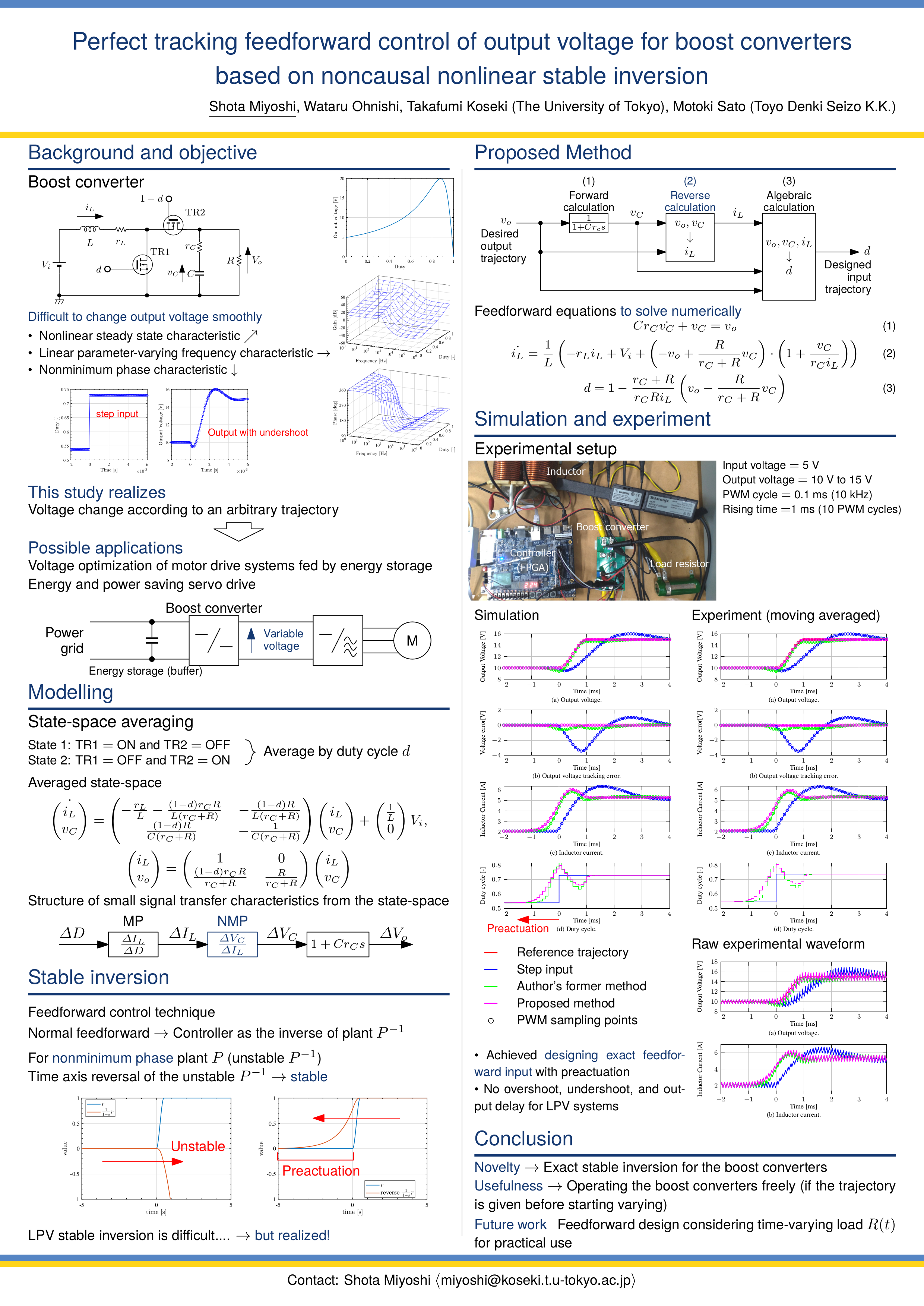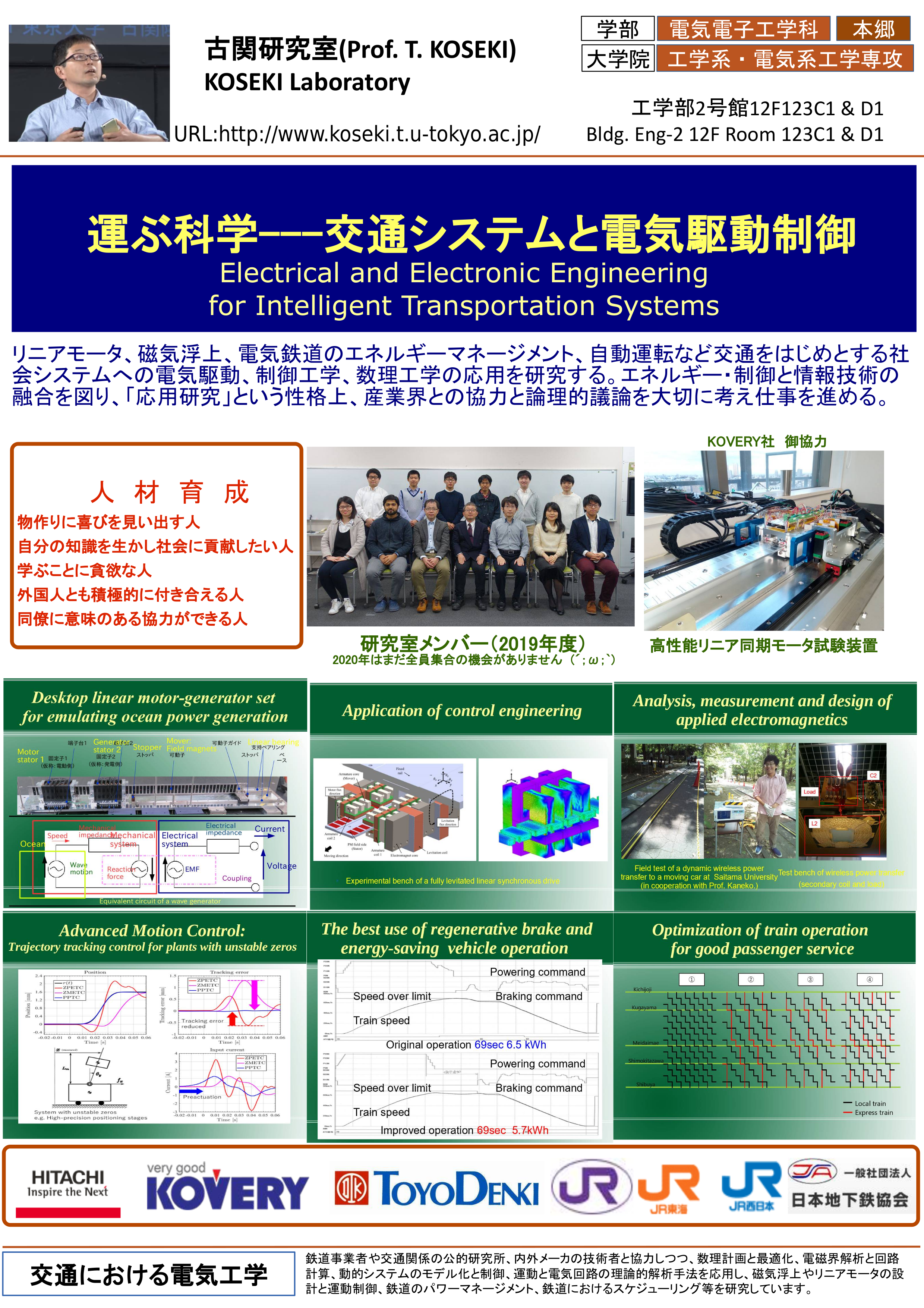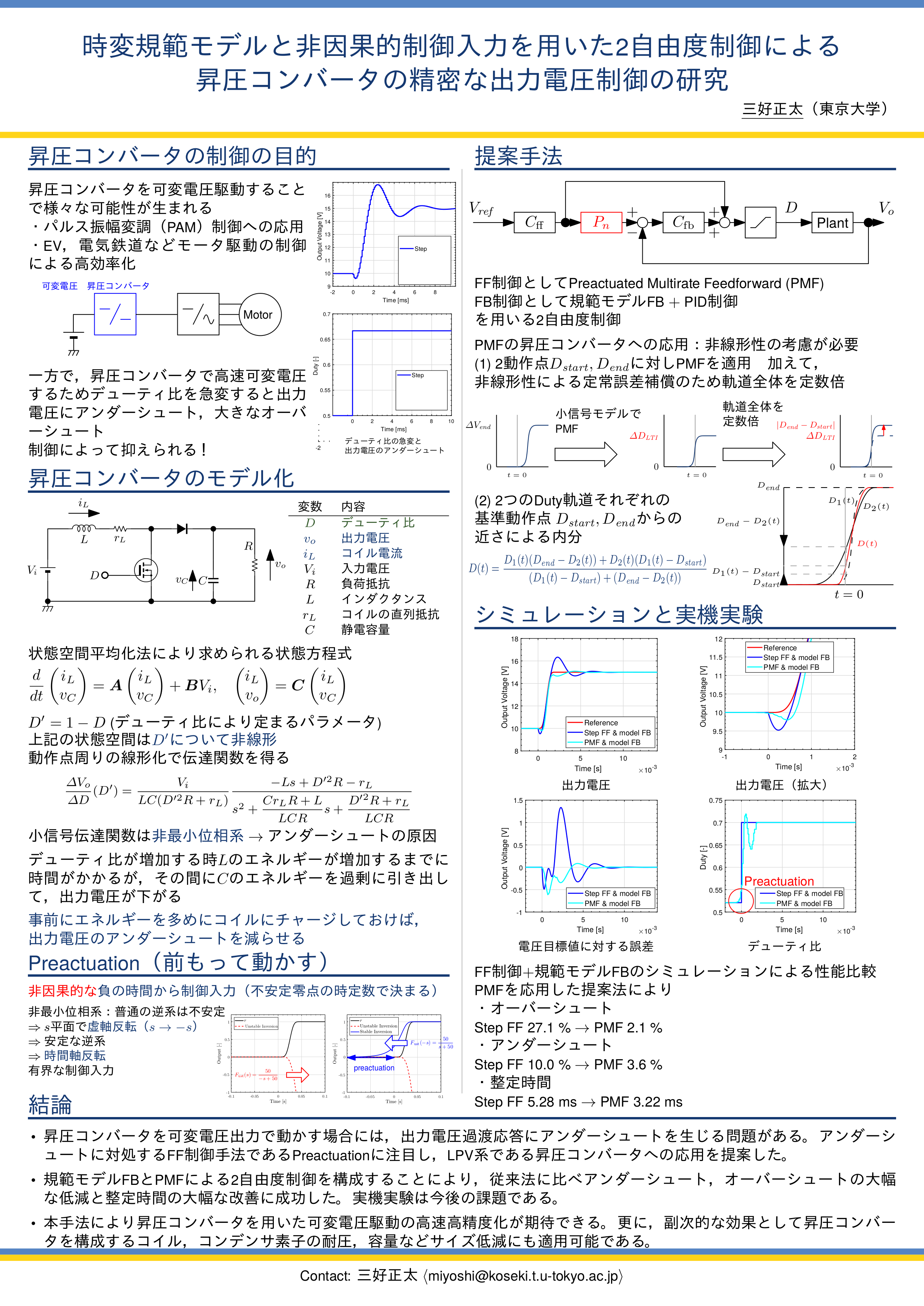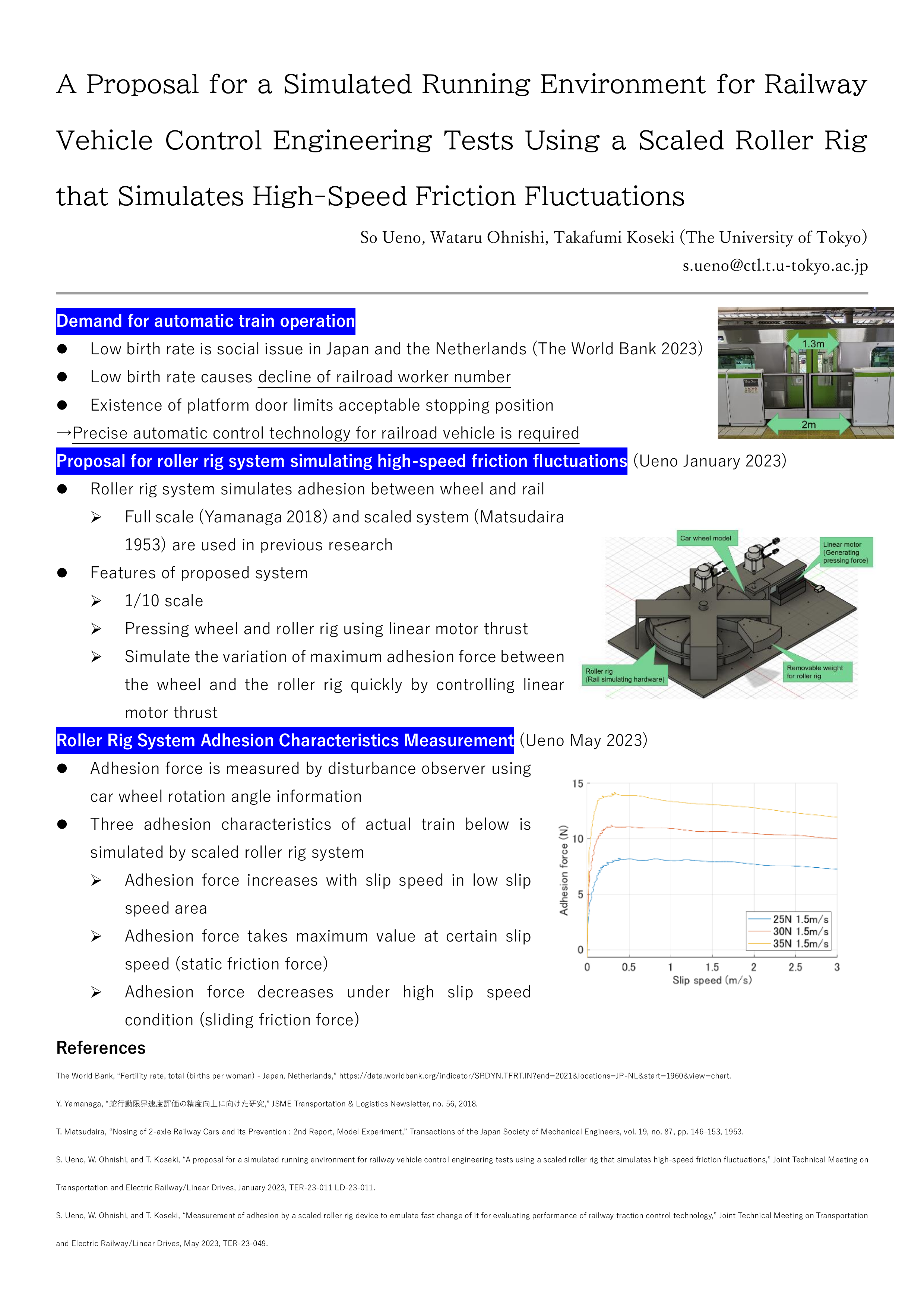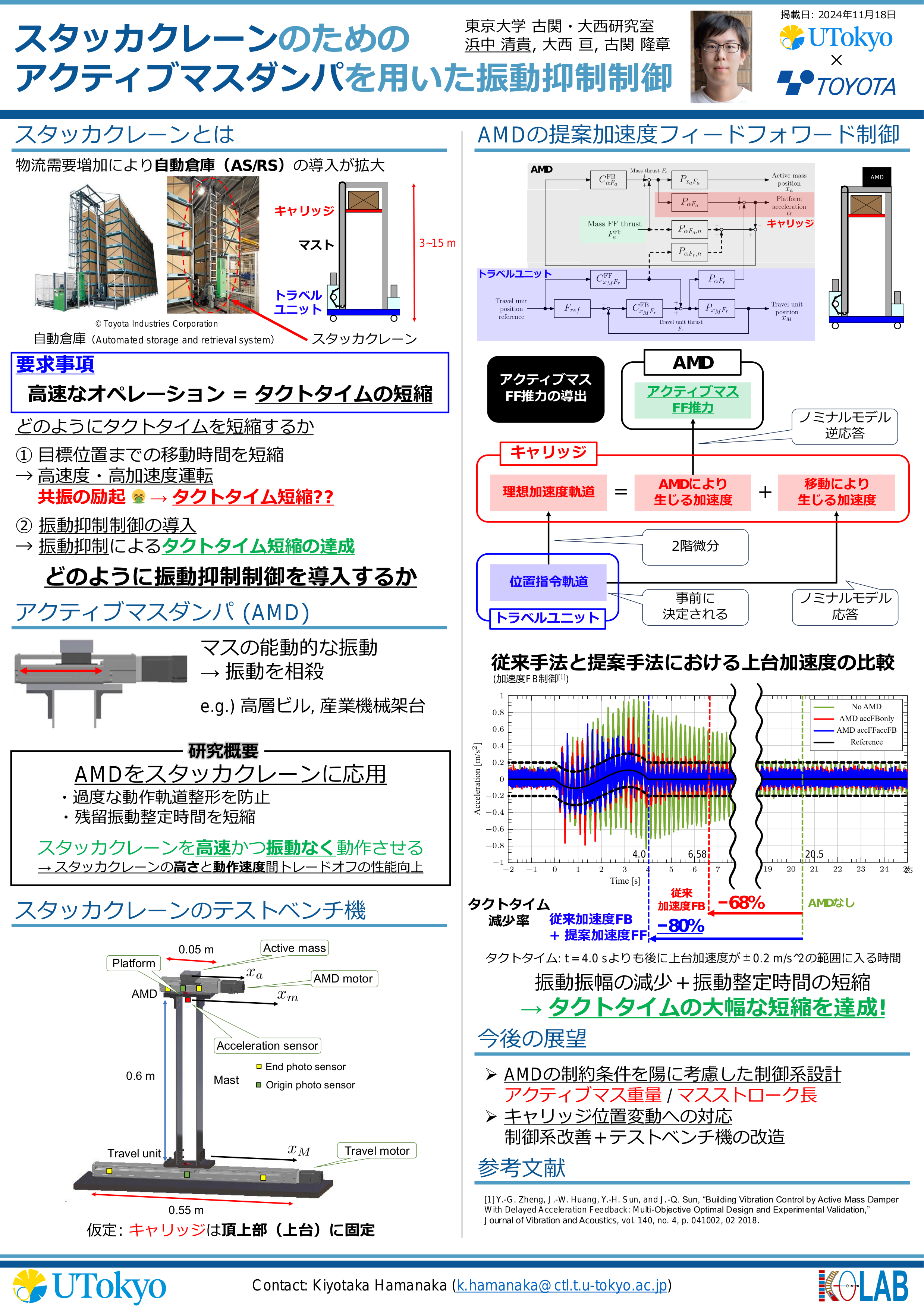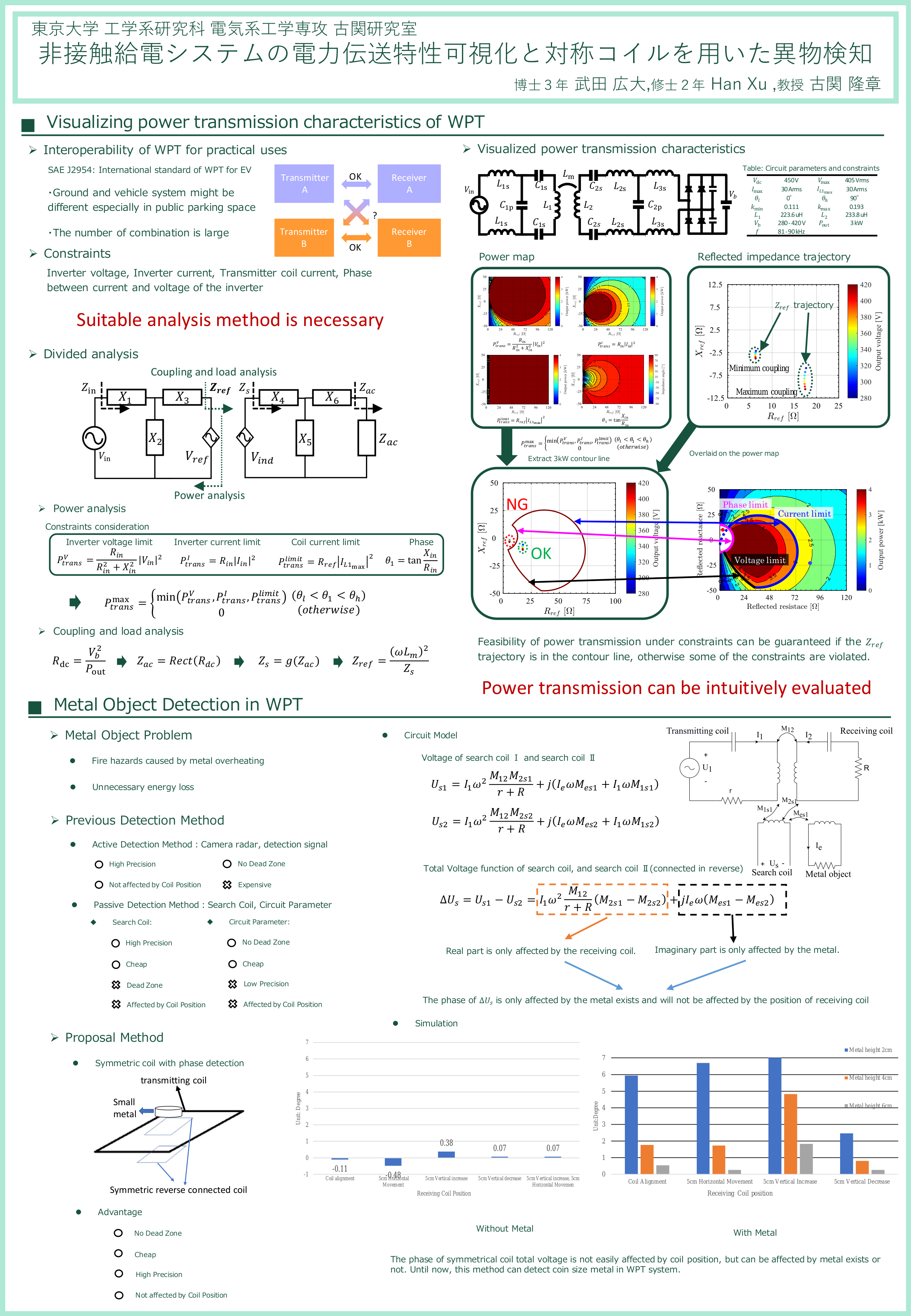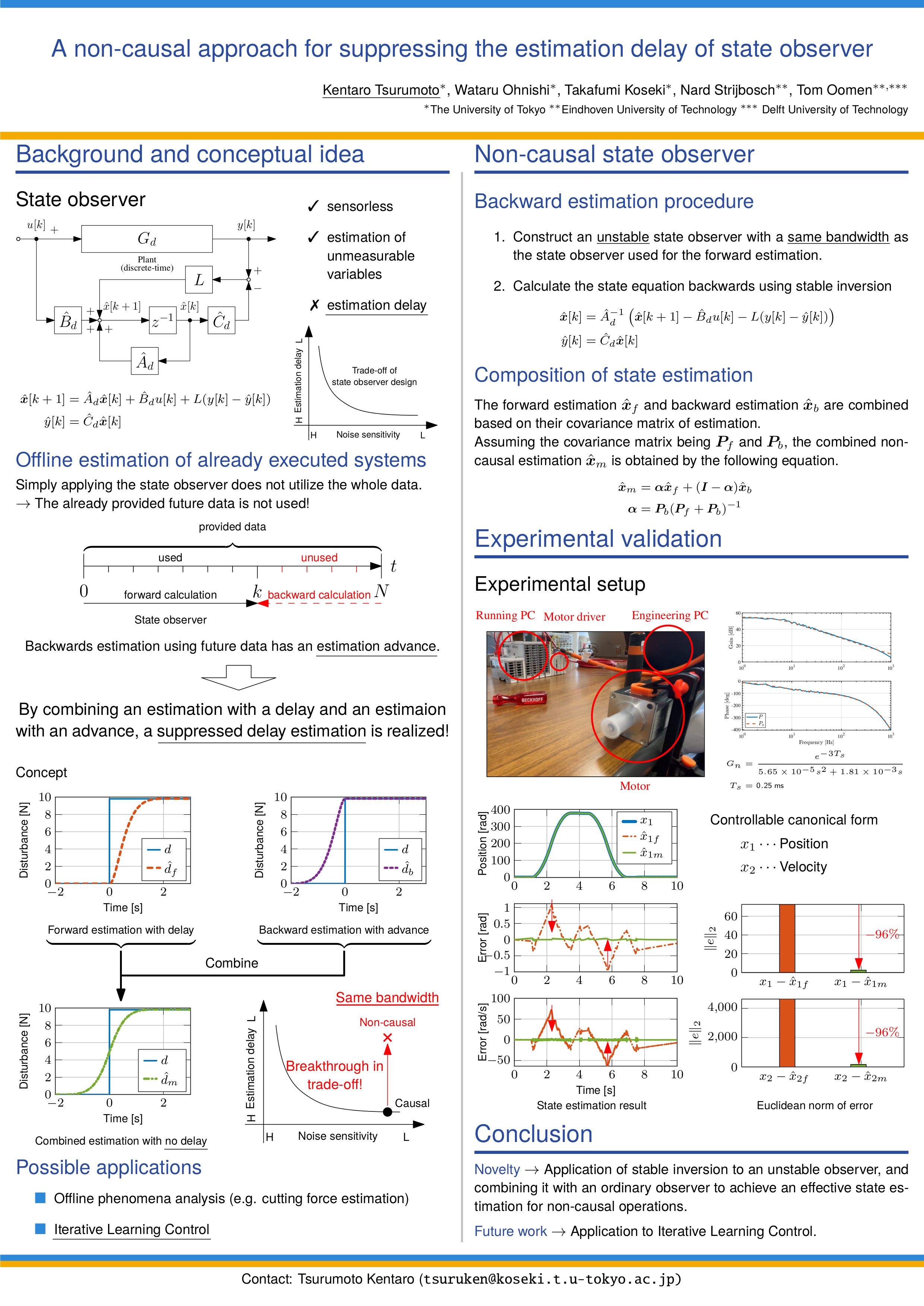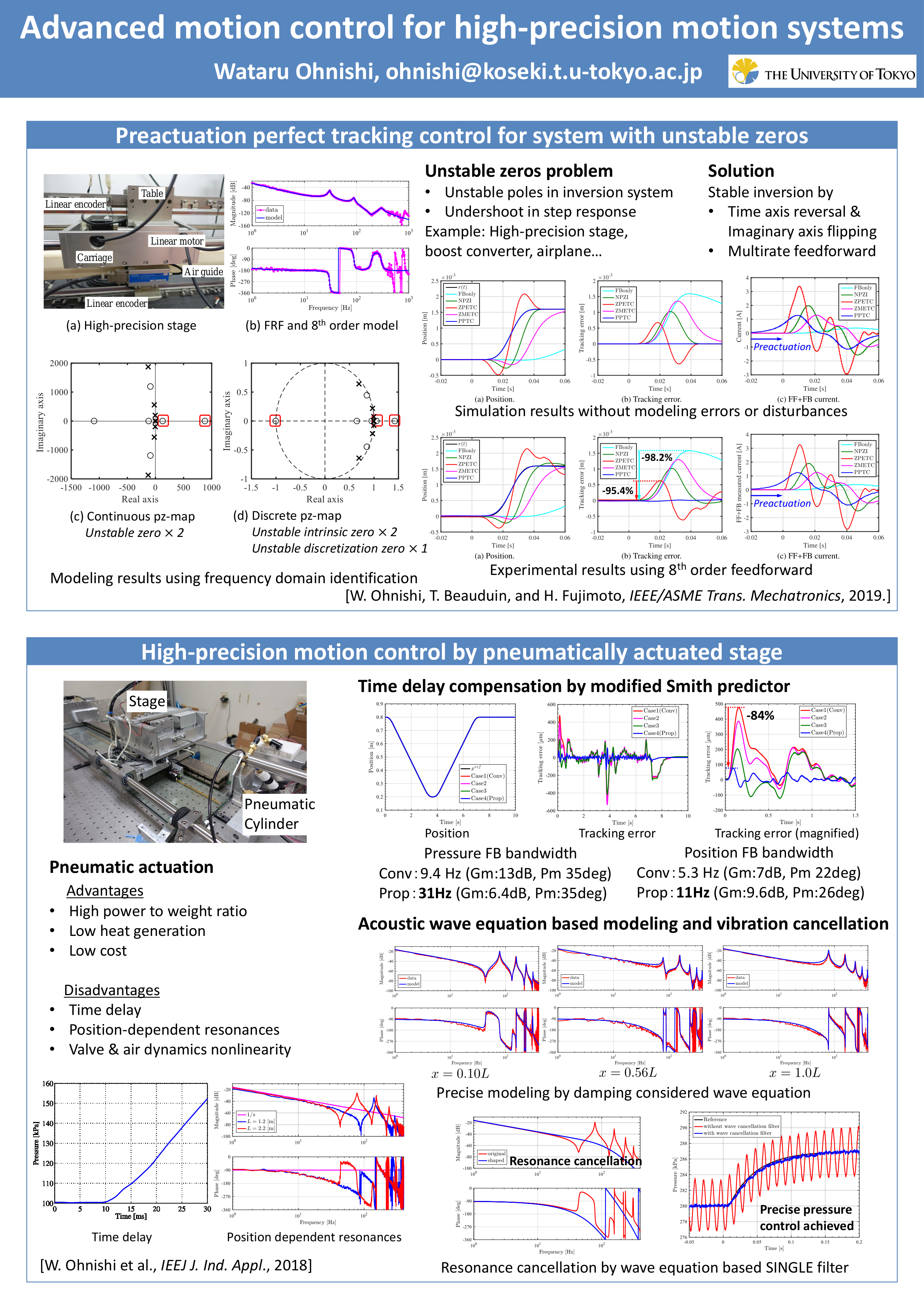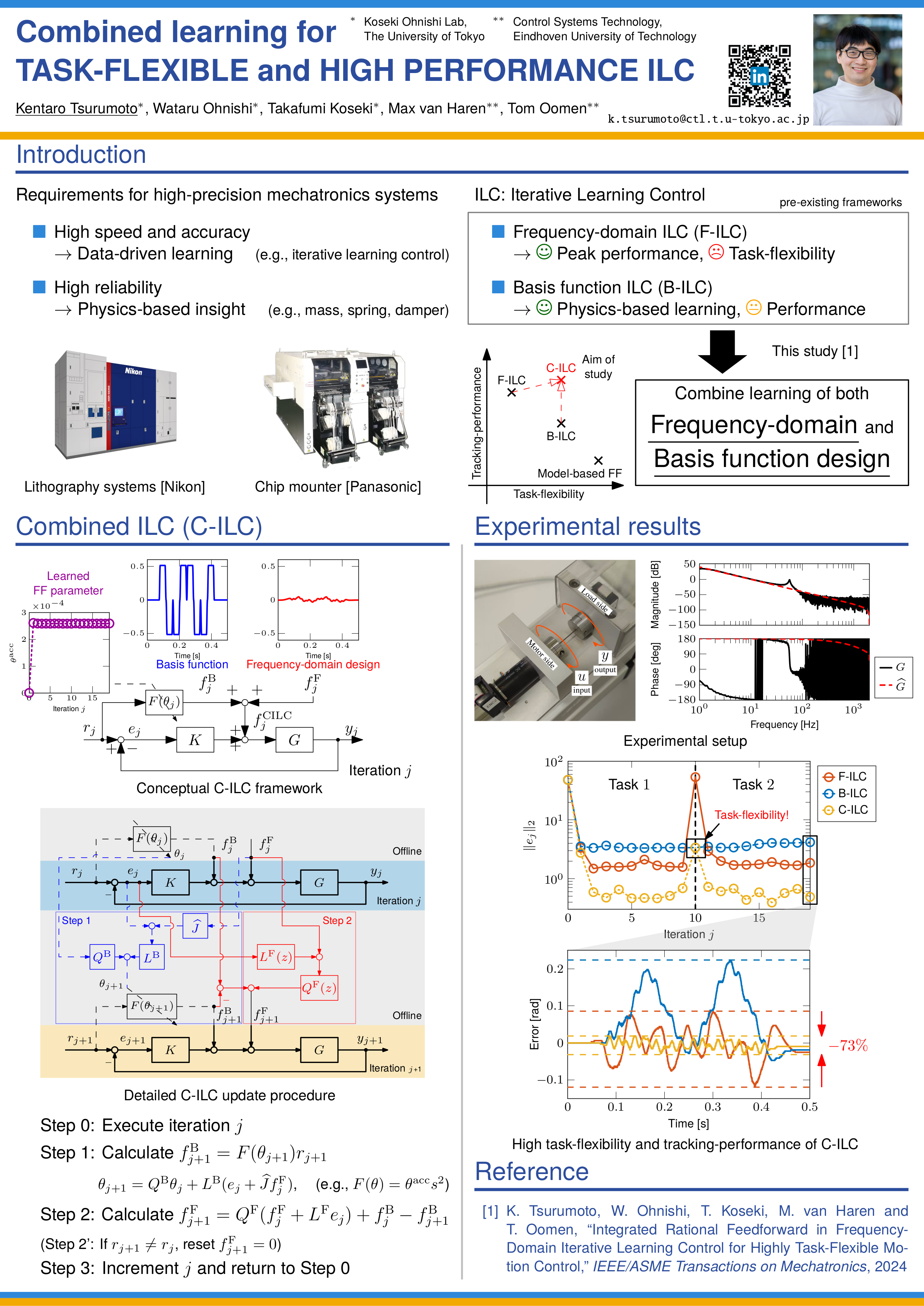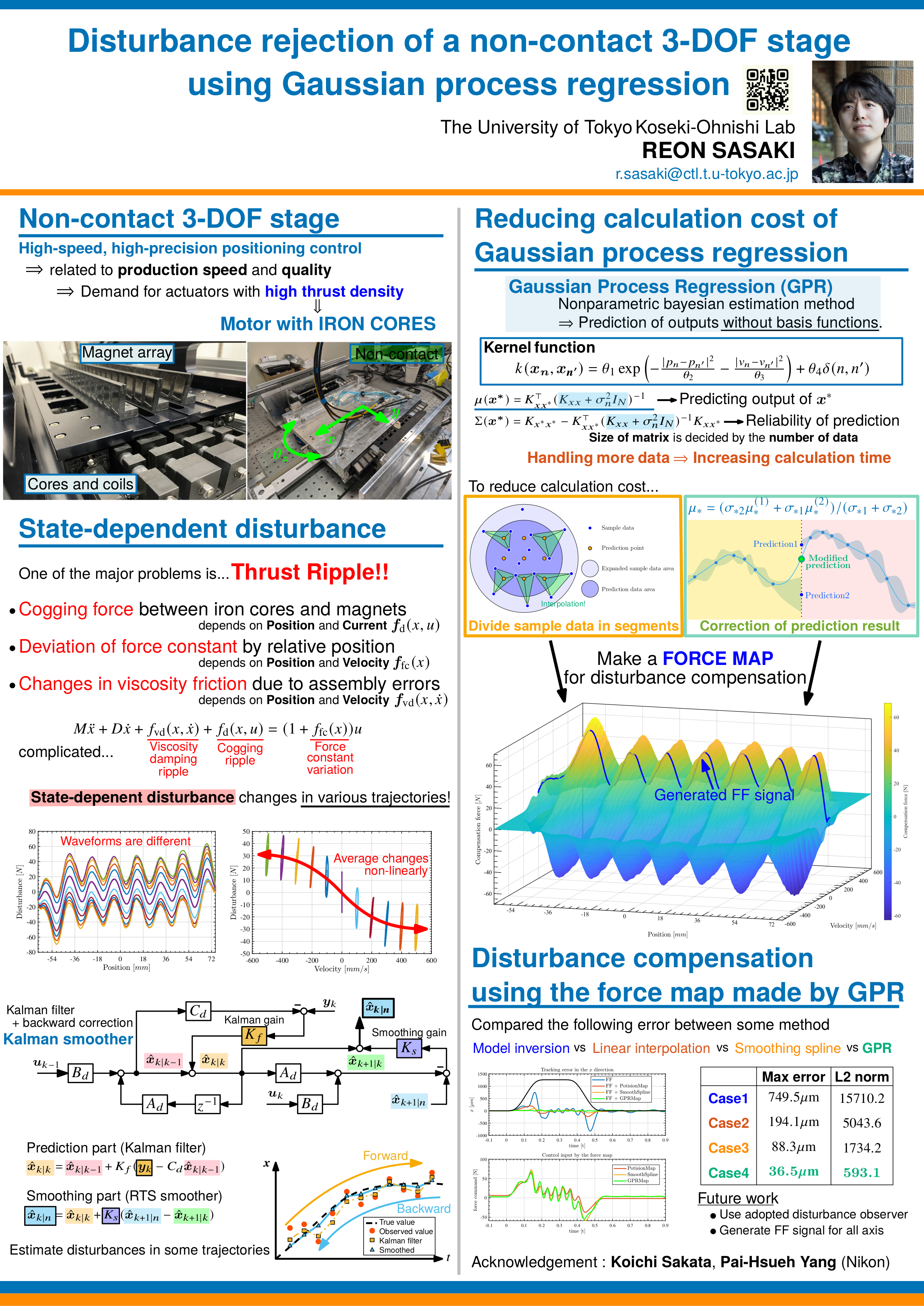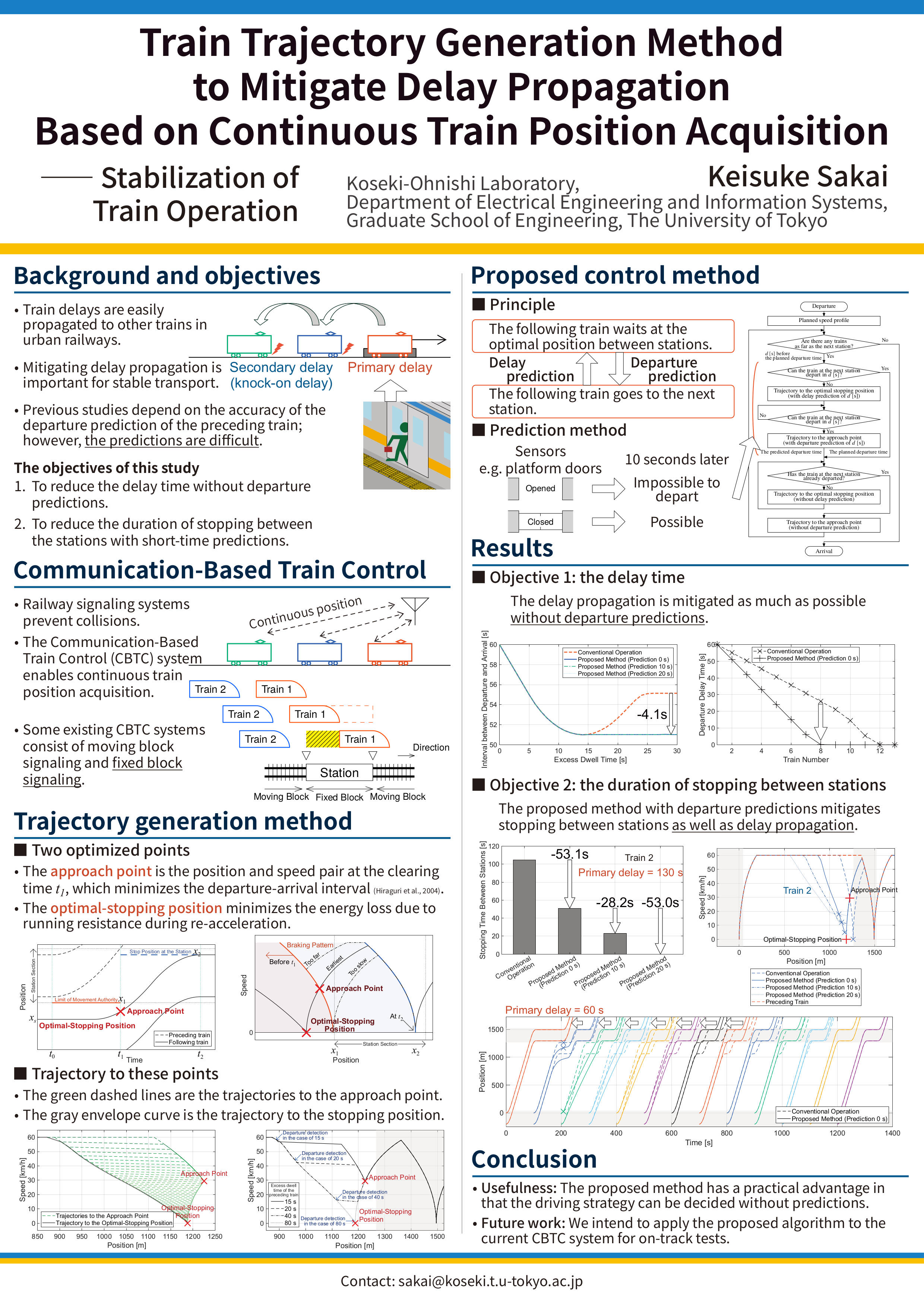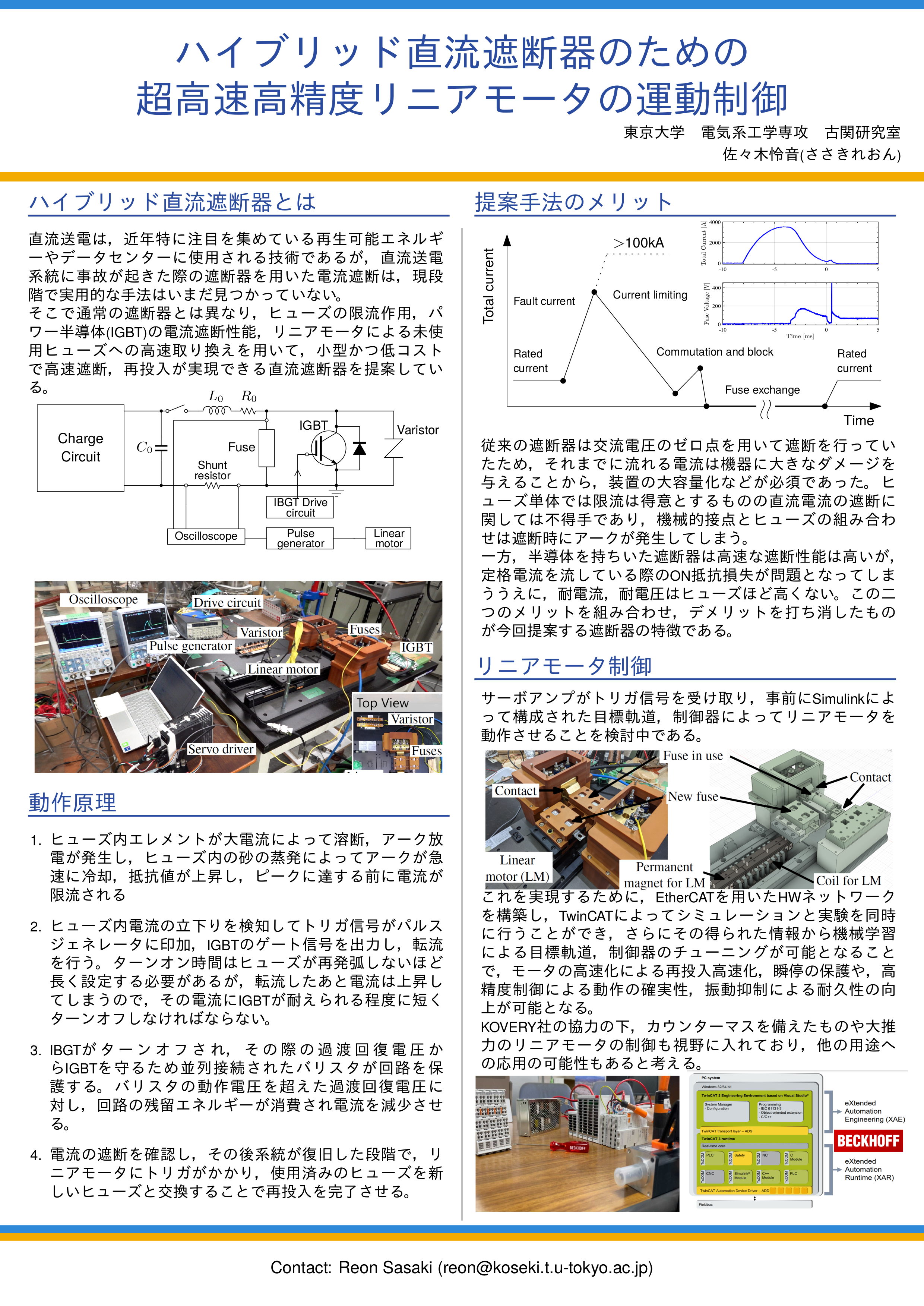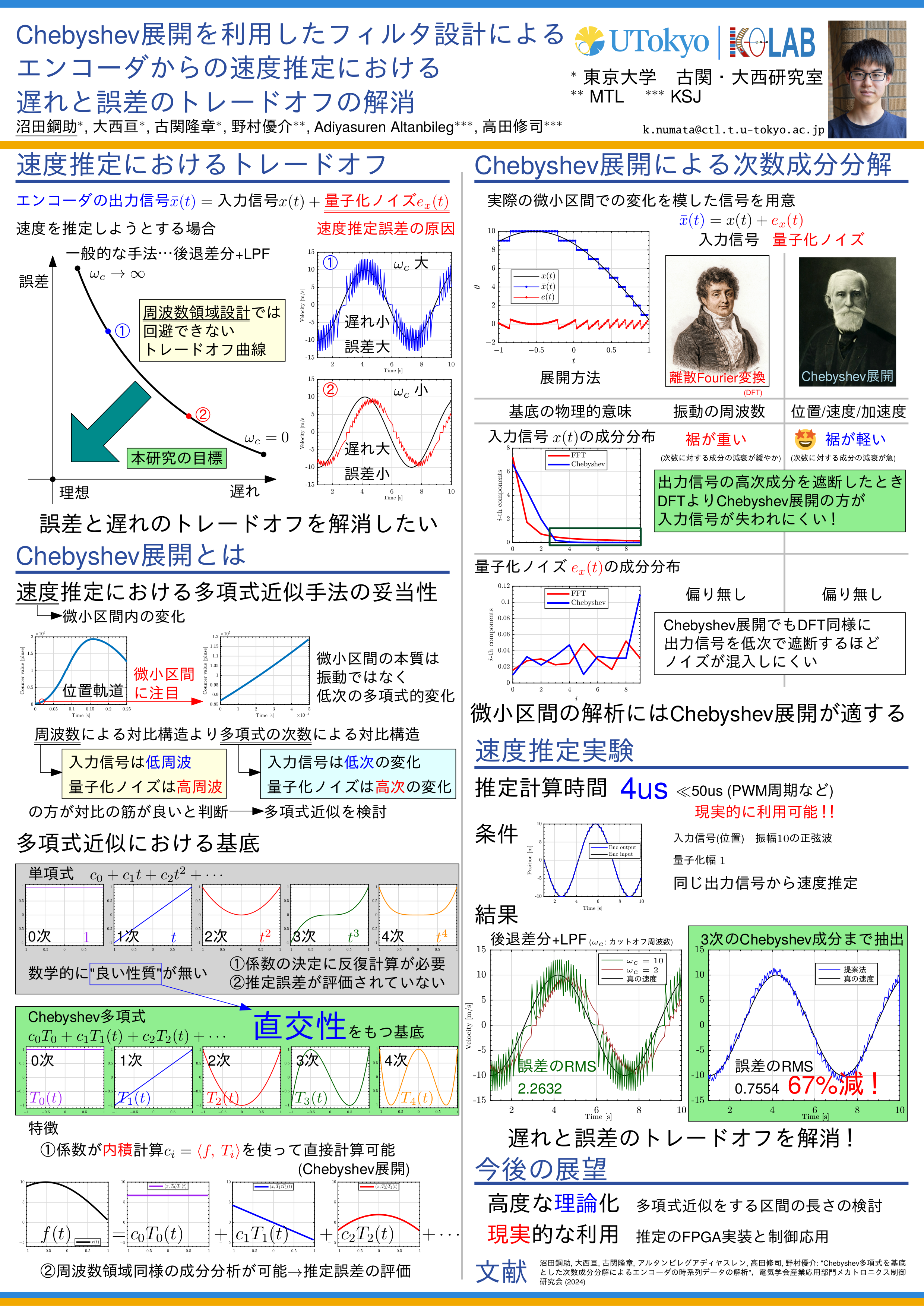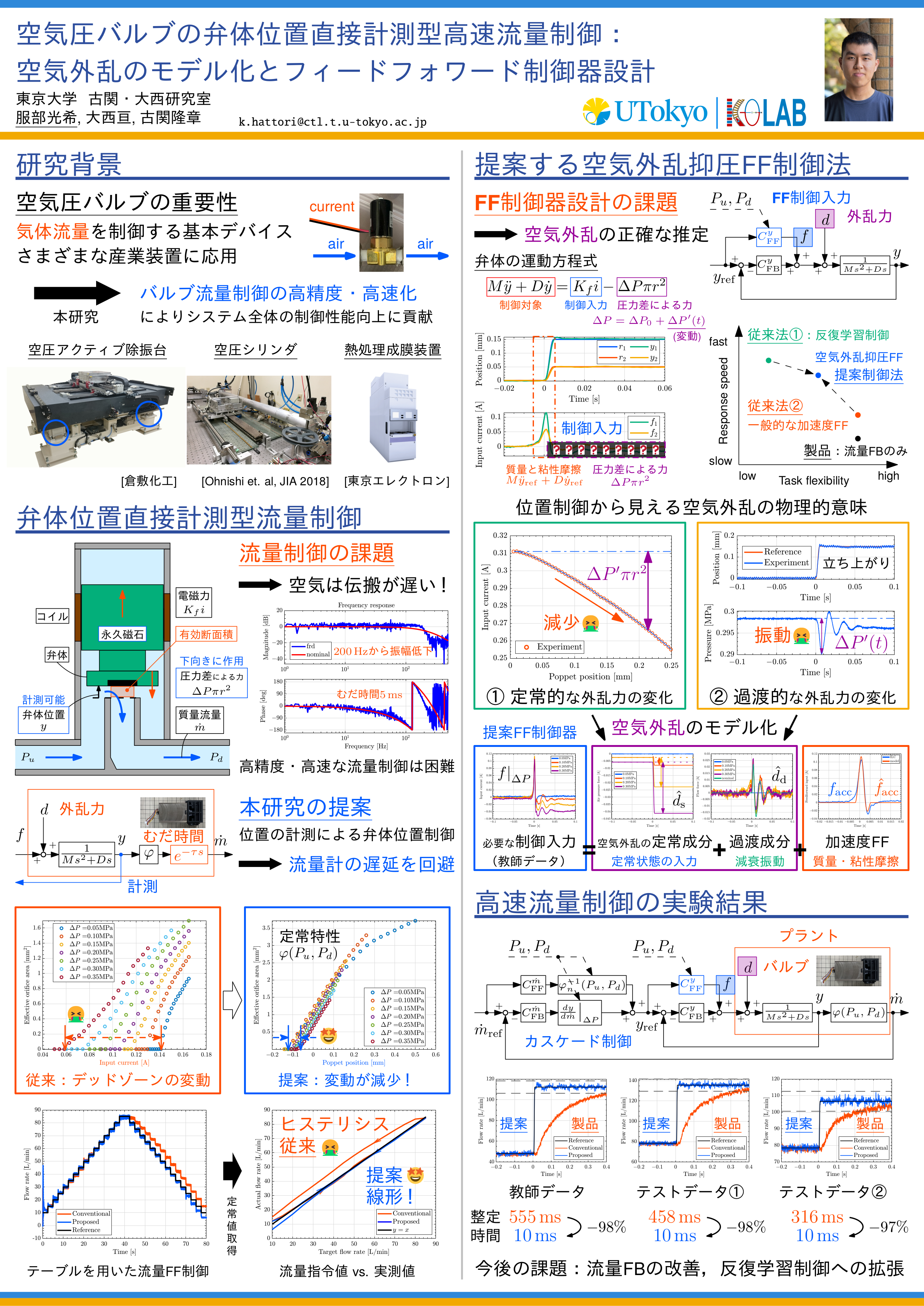Research on a unified systematic compensation circuit design for wireless power transfer considering practical constraints
Kodai Takeda
Research on a unified systematic compensation circuit design for wireless power transfer considering practical constraints
Kodai TakedaWPT for electric vehicles (EVs) is taken as an example of an application of the proposed method. In recent years, WPT for EV has been studied all over the world to extend its cruising range and improve convenience. Analyses done in previous researches are useful and straightforward for evaluation of the specific combination of a transmitter (TX) system and a receiver (RX) system in such cases as the commercial system compliant with a well-defined standard or the industrial system originally designed as a pair system.
Meanwhile, the combination of TX and RX is not always identical to what designers expect in such cases that a user charges the user's EV with a public wireless charging facility in a parking spot. The unexpected combination of the TX and RX is not able to guarantee to charge the battery sufficiently. Moreover, in practice, the resonance condition of WPT is not always satisfied due to variation in the values of the elements of the compensation circuit. For these reasons, a practical compensation circuit is often designed as the non-resonant system. Since such a non-resonant compensating circuit requires a complicated analysis, its power transmission characteristics have not been sufficiently studied yet. As a result, the design of a non-resonant compensation circuit is complicated and time-consuming.
In this research, we propose a visualized method that can intuitively grasp and evaluate the power transmission characteristics of various combinations of compensating circuits by dividing the circuits into the TX side and RX side. In addition, we aim to apply this method to the compensation circuit design of dynamic wireless power transfer for EV by considering the transient phenomena of the circuit.
